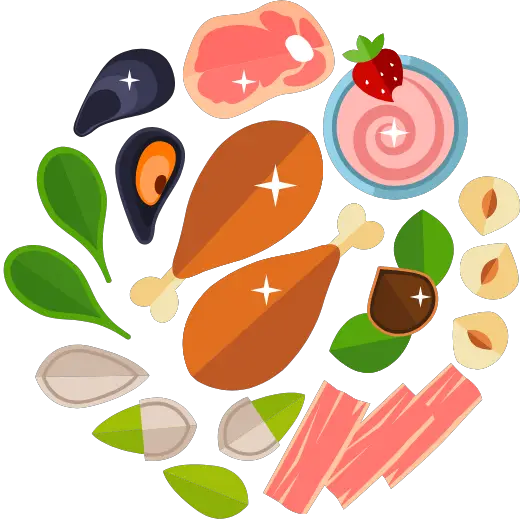In the rich and diverse world of Korean cuisine, there is one experience that stands above all others in its scope, artistry, and expression of hospitality: Hanjeongsik (한정식). Translated as a “Korean full-course meal,” Hanjeongsik is not just dinner; it is a grand culinary event, a spectacular banquet that fills the table with a dazzling array of dishes, showcasing the harmony of flavors, colors, and textures that defines the nation’s food philosophy.
With roots in the lavish meals served in the royal courts and aristocratic homes of ancient Korea, Hanjeongsik has evolved into a beloved way to celebrate special occasions and honor important guests. To partake in this feast is to experience the pinnacle of Korean gastronomy. This guide will walk you through the philosophy, structure, and etiquette of Hanjeongsik, empowering you to fully appreciate this magnificent culinary journey.
The Philosophy: A Symphony of Balance and Abundance
At its core, Hanjeongsik is a physical manifestation of the Korean culinary philosophy, which emphasizes balance and harmony. This is achieved through the principle of obangsaek, or the “five colors” (white, black, green, red, and yellow), which correspond to the five elements of traditional cosmology. A Hanjeongsik table is a vibrant canvas, with each color represented across the numerous dishes, ensuring not only visual beauty but also a wide spectrum of nutrients.
This balance extends to flavors and cooking methods. The meal is a carefully orchestrated symphony of tastes—salty, sweet, sour, spicy, and bitter—and textures, achieved by employing a variety of cooking techniques, including grilling, steaming, braising, fermenting, and fresh preparation.
Furthermore, Hanjeongsik is the ultimate expression of Korean generosity and hospitality. The sheer abundance of food covering the table is a gesture of welcome and respect, a wish for the guest to eat well and be nourished.
The Structure of the Meal: A Parade of Plates
Traditionally, a Hanjeongsik meal was served with all the dishes laid out on the table at once, creating a breathtaking visual feast. While this style can still be found, many modern high-end restaurants have adopted a more sequential, course-by-course approach, allowing diners to savor each stage of the meal. A modern Hanjeongsik typically unfolds as follows:
1. The Appetizers (전채 – Jeonchae)
The meal begins with a selection of light, palate-awakening dishes designed to stimulate the appetite. This often starts with a bowl of warm, comforting porridge, such as juk (rice porridge) or hobak-juk (pumpkin porridge). This may be followed by a refreshing chilled salad, delicate vegetable wraps, or a beautiful platter of gujeolpan (“nine-section plate”), featuring eight finely julienned accompaniments surrounding a stack of small crepes.
2. The Main Dishes (주요리 – Juyori)
This is the heart of the Hanjeongsik experience. It is not a single main course, but rather a grand procession of substantial, centerpiece dishes that arrive together or in quick succession. These showcase the best of Korean cuisine and typically include:
- Meat Dishes: Such as bulgogi (marinated grilled beef), galbi-jjim (braised beef short ribs), or bossam (boiled pork belly served with wraps).
- Seafood Dishes: Featuring grilled fish (saengseon-gui), braised seafood, or sometimes fresh raw fish (hoe).
- Stews and Soups: A bubbling, savory stew (jjigae) or a clear, nourishing soup (tang) is often included.
- Specialty Dishes: Beloved classics like japchae (stir-fried glass noodles with vegetables) and a variety of jeon (savory, pan-fried pancakes) are almost always part of the spread.
3. The Foundation: Rice, Soup, and the Universe of Banchan
Accompanying the main dishes, each diner receives their own individual bowl of steamed rice (bap) and a light soup (guk). These serve as the neutral foundation for the meal.
The true hallmark of Hanjeongsik, however, is the vast and dazzling array of side dishes known as banchan (반찬). Dozens of small bowls will cover every remaining space on the table. Banchan are not mere garnishes; they are essential components designed to be eaten with the rice, providing a constant interplay of different flavors and textures with every bite. The variety is endless and may include:
- Kimchi: Several types, from the classic napa cabbage to radish or cucumber kimchi.
- Namul: Seasoned vegetable dishes, either blanched or stir-fried.
- Jorim: Ingredients simmered in a savory soy-based sauce, like braised lotus root or black beans.
- Bokkeum: Stir-fried dishes, such as spicy stir-fried squid.
4. The Dessert (후식 – Husik)
The meal concludes not with a heavy, rich cake, but with a light and clean dessert designed to refresh the palate. This is typically a platter of fresh, seasonal fruit, a small portion of elegant rice cakes (tteok), or a traditional sweet beverage like sikhye (a sweet rice punch) or sujeonggwa (a cinnamon-ginger punch).
How to Best Enjoy Hanjeongsik
The sheer volume of food can be overwhelming, but a few simple tips can help you navigate the feast:
- Pace Yourself: It is a marathon, not a sprint. Sample small portions of the initial courses to save room for the main event.
- Explore and Taste: The joy of Hanjeongsik is in its diversity. Be adventurous and try a little bit of everything.
- Use Your Rice: Think of your bowl of rice as your canvas. Take a bite of rice, then a taste of a banchan or a main dish. Each spoonful can be a new combination.
- It’s a Communal Affair: Hanjeongsik is meant to be shared. Engage with your fellow diners, discuss the flavors, and enjoy the collective experience.
In conclusion, Hanjeongsik is the grandest expression of Korean culinary culture. It is a journey that engages all the senses, a demonstration of skill, and a profound gesture of hospitality. To be invited to a Hanjeongsik table is to be offered a seat at a feast fit for royalty, an unforgettable experience that captures the very heart and soul of Korea.
